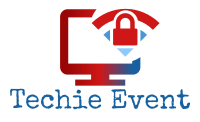In today’s global and distributed work environment, asynchronous collaboration has become not just a convenience, but a necessity. Teams spread across multiple time zones, freelancers juggling flexible hours, and companies aiming to reduce meeting fatigue all benefit from more effective async practices. Yet, despite its importance, asynchronous work often feels like an afterthought—scattered messages, disorganized updates, and a lack of real connection. The good news? With the right rituals in place, async collaboration can be streamlined, inclusive, and even inspiring.
What is Asynchronous Collaboration?
Asynchronous collaboration refers to workflows and interactions that do not require participants to be online or available at the same time. You leave a message in a shared document or task board, someone else picks it up hours—or even days—later. Unlike real-time collaboration, this method allows for deep work and schedule flexibility, but it only works well when managed with intention.
To transform asynchronous collaboration from chaotic to empowering, you need more than just tools—you need rituals. These are repeatable behaviors and habits that create structure, set expectations, and embed collaboration into your team’s culture.
The Key Benefits of Async Rituals
With strong rituals in place, asynchronous workflows can:
- Enhance productivity by reducing interruptions and allowing for focused work
- Promote inclusivity by giving everyone a chance to contribute, regardless of timezone or personality type
- Encourage thoughtful communication that reduces misunderstandings
- Minimize meetings and free up calendars
Here are some tried-and-tested asynchronous collaboration rituals that actually work.
1. The Weekly Kickoff
Starting the week with clarity helps set the tone. In async workflows, this typically takes the form of a shared kickoff document or message, posted every Monday morning.
This should include:
- Key priorities and goals for the team
- Project updates or deliverables due
- Shout-outs for notable achievements
- Any blockers or decisions that need input
Tools like Notion, Google Docs, or even a dedicated Slack channel can host the kickoff. Encourage everyone to read and react within 24 hours, adding comments or questions where needed. This ritual not only aligns your team, but also creates a written record of weekly priorities.
2. Daily Async Stand-Ups
The daily stand-up is a beloved practice in Agile teams, but it doesn’t have to happen live on a video call. An asynchronous stand-up is a quick text-based update from each team member, usually revolving around three questions:
- What did I work on yesterday?
- What am I working on today?
- Is there anything blocking me?
These updates can live in a team chat thread, a task manager comment section, or a collaborative doc. The key is consistency. When everyone posts by a certain time (e.g., before 10am), it provides visibility and accountability without disrupting the day.

3. Decision Logs
One major pitfall of async work is a lack of context. Ever find yourself asking “Why did we decide that?” A public decision log solves that problem.
A decision log is simply a running list of important decisions, who made them, and why. Use a shared document or a wiki page. Standardize the entries like so:
- Date: June 3, 2024
- Decision: Move launch date for Product X back by one week
- Rationale: User testing revealed critical UX issues
- Deciders: Product Manager, UX Lead, Engineering Lead
This habit fosters transparency, helps onboard new team members quickly, and avoids rediscovering old arguments.
4. Async Brainstorming Sprints
Brainstorming doesn’t have to happen simultaneously. In fact, giving people time to think can yield better ideas.
Here’s how to run an effective async brainstorm:
- Frame the problem clearly. Provide context, constraints, and goals.
- Give contributors a 48-hour window to drop ideas into a shared doc or whiteboard tool like Miro.
- Encourage commenting and building on others’ ideas using emojis or notes.
- After the window closes, summarize the takeaways and next steps asynchronously.
By creating space for different working styles, async brainstorming taps into deeper creativity while reducing groupthink.

5. Office Hours (In Writing)
Team leads and managers often become bottlenecks in async environments. An “Office Hours” ritual can make leaders more accessible without micromanaging or overwhelming.
Every week, designate a time slot where team members can drop questions, feedback, or requests in a designated space—like a Slack thread or Notion page. The leader commits to responding during or shortly after that window.
This reduces latency for decision-making and makes it easier for quieter team members to be heard.
6. Friday Reflections
Sometimes, you need to look back to move forward. A weekly ritual of reflection can build trust, surface issues, and celebrate wins.
This could be as simple as answering three questions by end-of-day Friday:
- Win: What did I accomplish this week?
- Challenge: What could’ve gone better?
- Learning: What did I learn?
Encourage responses to be shared publicly with your team. Over time, this builds a culture of growth and openness, even when you aren’t all in the same place.
7. Async Feedback Loops
Feedback shouldn’t only arrive once a year. Async rituals can normalize and democratize continuous improvement.
Try a “feedback thread” where team members drop kudos, suggestions, or questions about a recent project. You could also use forms with prompts like:
- What went well in this project?
- What could we improve?
- What should we do differently next time?
Keep the process low-stakes but consistent—maybe after every sprint or key milestone. Make it easy to give praise, ask questions, and grow together.
Rituals Are Cultural Glue
Successful async collaboration is less about finding the perfect tool and more about embedding repeatable habits that align your team. When rituals are predictable, easy to follow, and well-documented, they reduce ambiguity, encourage participation, and promote ownership.
Keep in mind that no two teams are identical. The key is to experiment with rituals, gather feedback, and evolve your playbook based on what works. Start small—a shared doc here, a Friday reflection there. Over time, these practices form a rhythm that makes async not just functional, but genuinely effective.

Closing Thoughts
Async collaboration doesn’t have to feel distant or disconnected. With intentional rituals, your team can stay aligned, connected, and productive—no matter where or when they work. As more organizations embrace flexible and remote-first approaches, developing strong async habits isn’t just a competitive advantage; it’s a game changer.
So the next time you feel tempted to call a last-minute meeting or send another “ping” message, pause. Ask yourself: Could this be solved with a ritual? Chances are, the answer is yes—and your future self will thank you.
